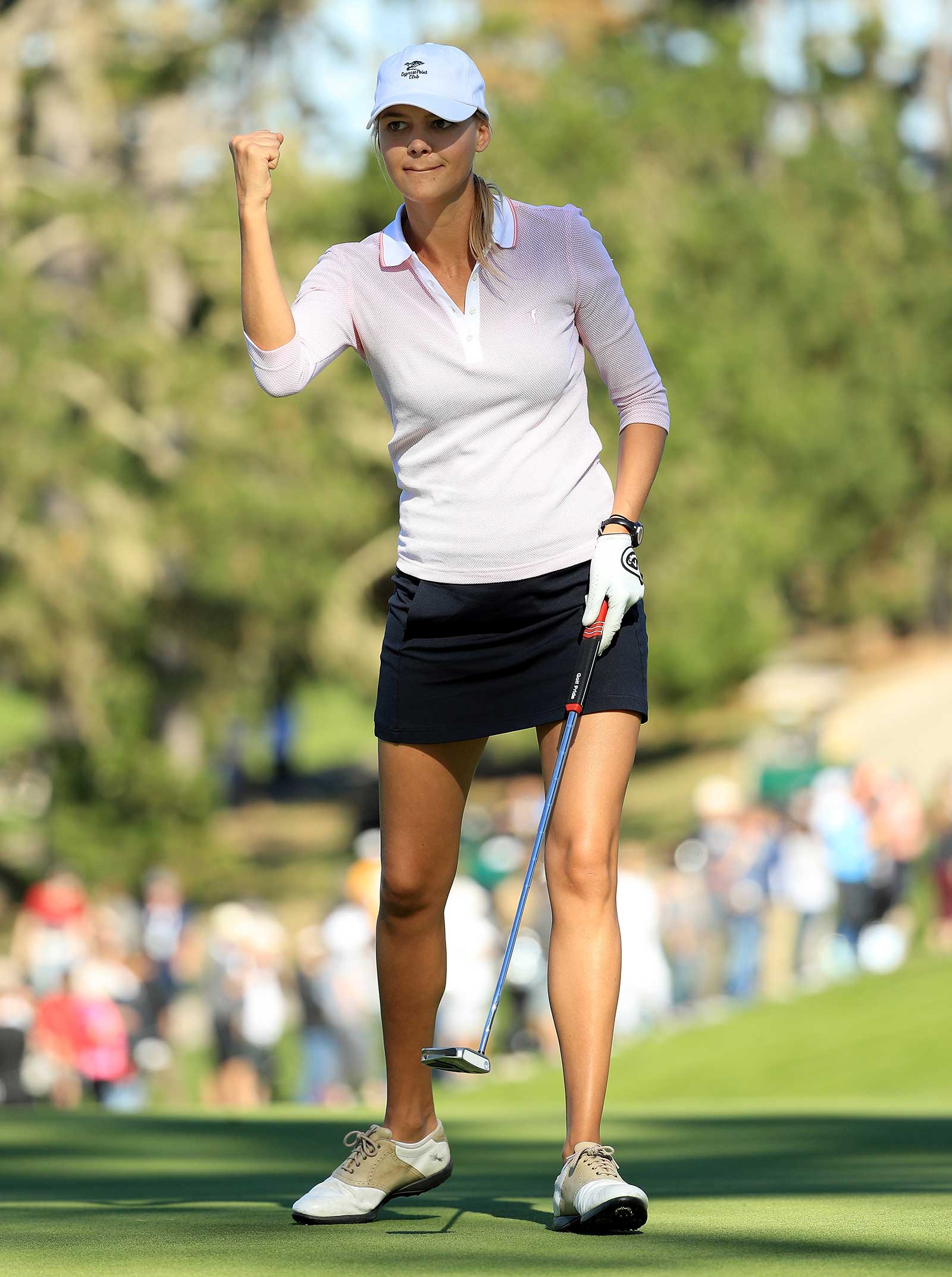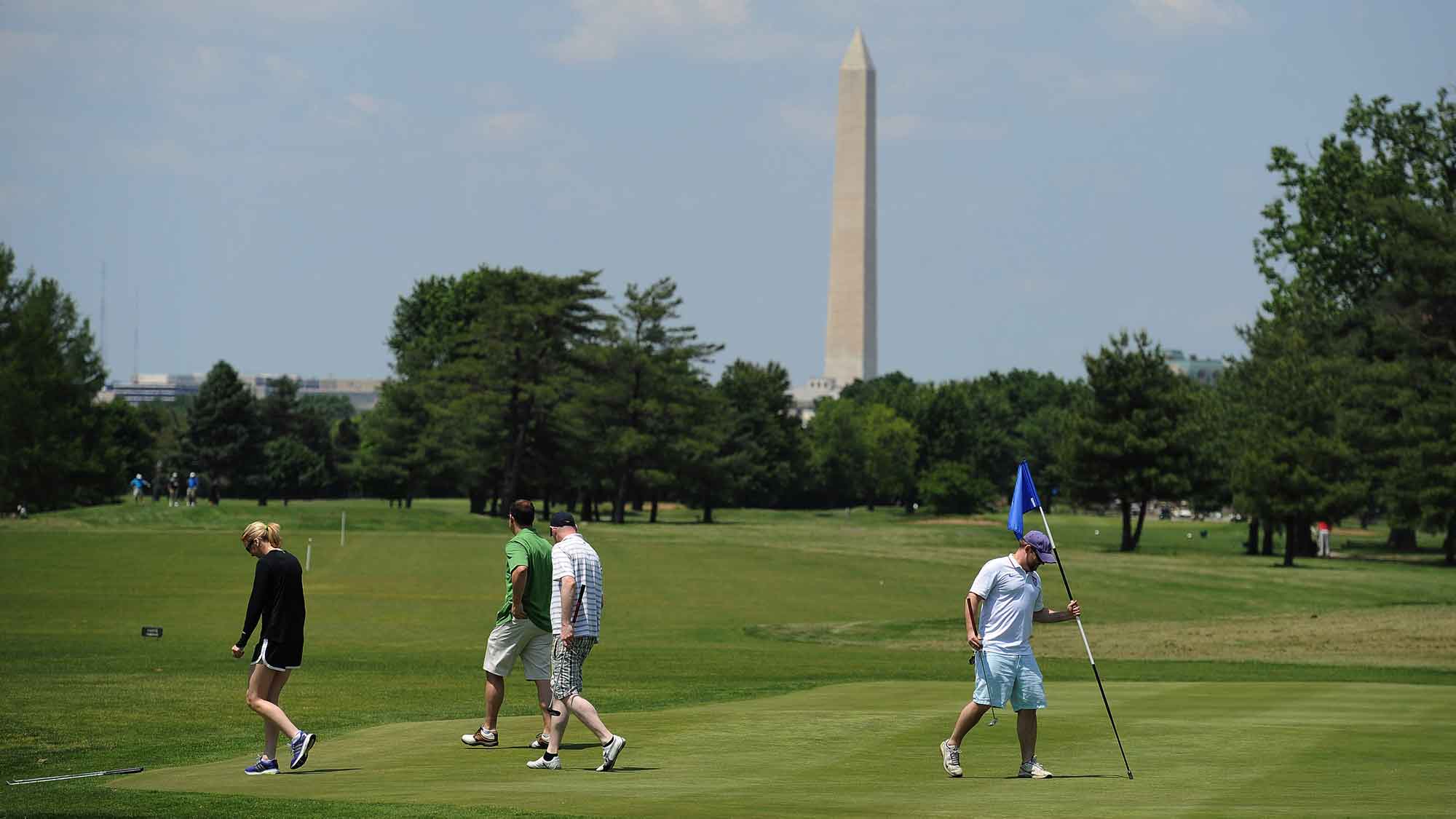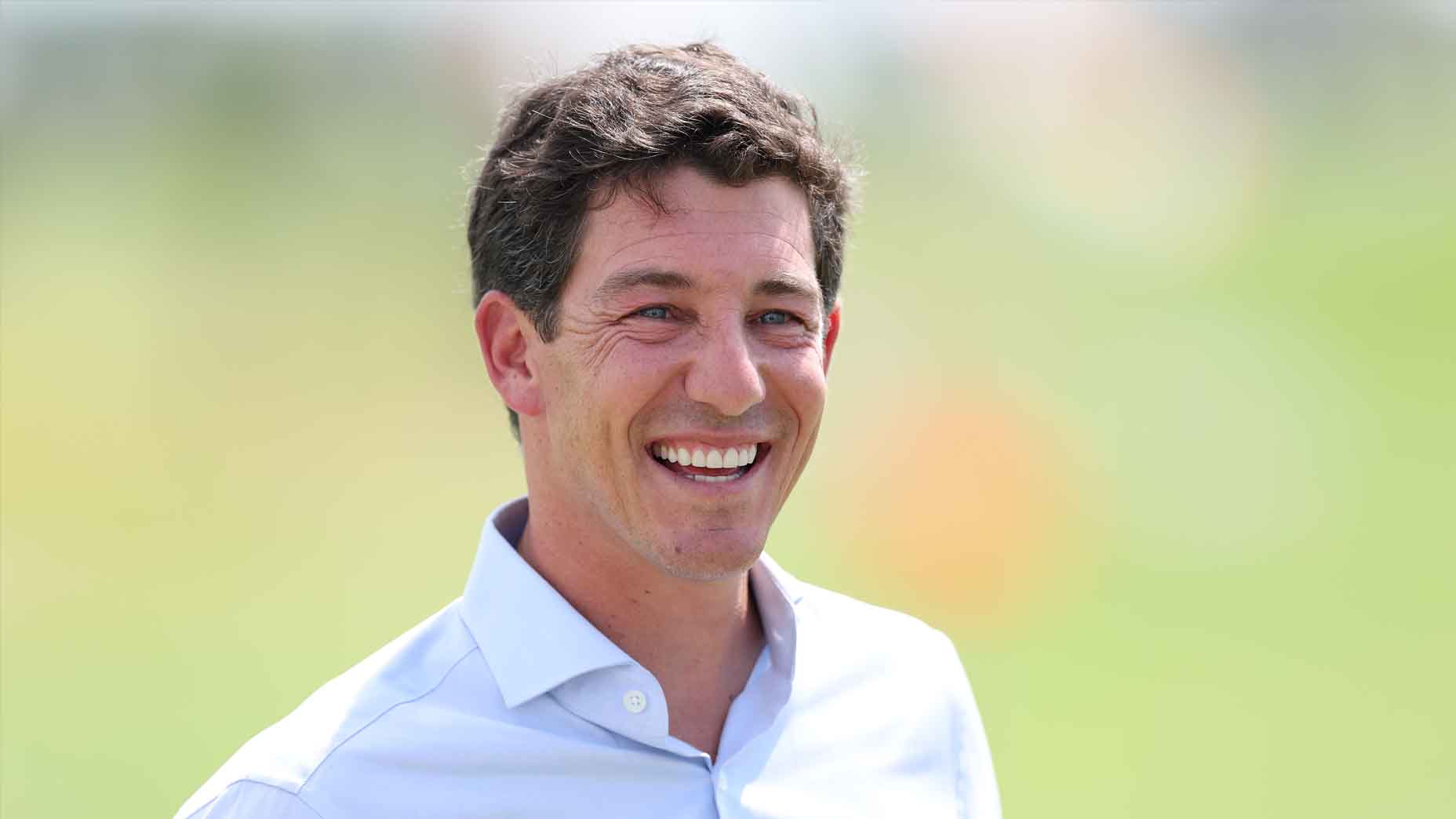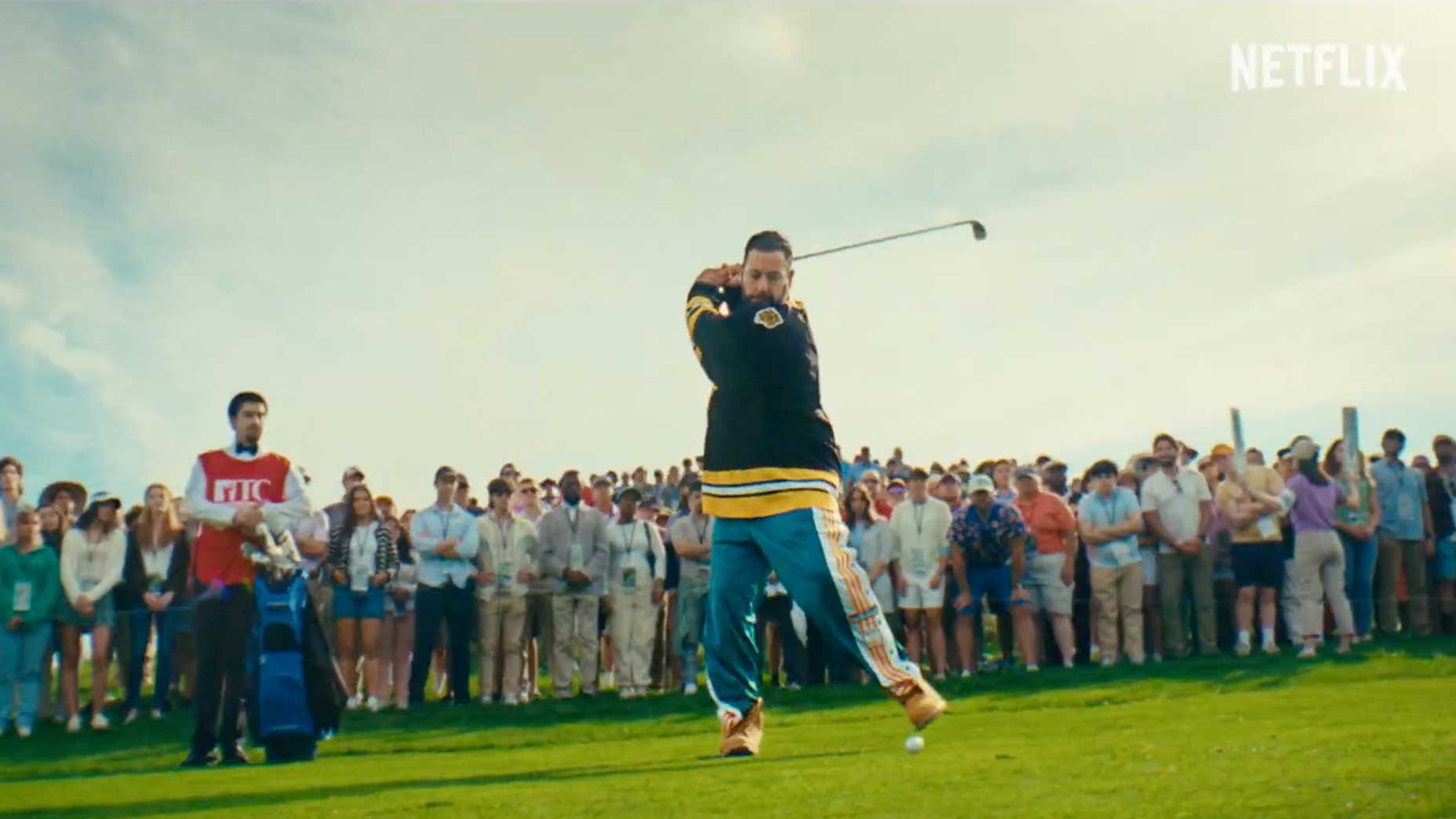I shot 60 in the first round of the 2006 U.S. Amateur, at Chaska Town Club outside Minneapolis. I was 19 years old, dad was on the bag, the weather was ideal, and I beat the runner-up by six strokes. I’ve enjoyed a lot of rounds in my career, but that one was about as close to perfect as I can remember. That day sticks. And while every round can’t be a 10, I still shoot the moon every time I tee it up. And trust me — perfection doesn’t happen by chance. To plan for it, follow my lead. For help, we’ve got some famous golfers from other walks of life to chime in. Perfect rounds aren’t just for Tour pros. It’s time to enjoy yours.
1. Start with a killer breakfast
It’s the most important meal, so think outside the doughnut box. Grain (and fruits and such) can be your friend, on and off the green.
Billy Says: “Man, if I could order any breakfast and not feel bad about myself, it would be blueberry pancakes, eggs and bacon. Sounds awesome, right? But it’s heavy on the stomach. So I try to eat healthier. My go-to breakfast most mornings is yogurt and granola, some berries, toast with peanut butter, and orange juice. If it gets boring after a couple of months, I switch it up a little bit. But that’s mostly what I eat.”
Thomas Keller, the chef/proprietor of ultra-culinary Per Se and The French Laundry, likes his pre-round chow, too:
“On most days, I have two eggs for breakfast. But on days when I’m playing golf, I go for something a little heartier to get me through the round: avocado toast. It’s nutritious, delicious and it’s not hard to prepare (scan the photo below for my complete recipe). I like to top it with an egg or a slice of bacon for extra protein. The bread is filling, and there’s a nice mix of healthy fats; a combo to get me ready to play my best.” — As told to Josh Sens

2. Power through an efficient warm-up
Range rats need not apply. Getting loose and dialed in can take less time than a J.B. Holmes approach shot.
Billy Says: “On Tour, my warm-up is generally about an hour and a half, but if you only have 30 minutes”—like the typical weekend golfer—”start with five minutes of putting. First, lag putts of 30, 40 feet; then, to get the feel of the ball going into the hole, some putts inside six feet. For another five or so minutes, hit some chips, some bump-and-runs, some shots out of the bunker. Then go to the range for a dynamic, five-minute warm-up: some basic movement to get the blood flowing, like stretching and lunges. Get the body working and ready for a golf swing. You’re now roughly 15 minutes into your warm-up, with 15 minutes to go. While at the range, start by hitting some wedges and irons. Again, you’re looking to get the body loose—and you’re not too worried about how and where you’re hitting it. The focus should really kick in when you pull your driver. Grab five balls, define a spot on the range as your fairway, and go at it. Total range time with a club in your hand: 10 minutes. With your last five minutes, return to the putting green for some five-footers. See the ball go in the hole. Then, off to the first tee.”
How NBA All-Star shooting guard and avid golfer Andre Iguodala gets revved to roll the rock:
A good warm-up is like a good golf swing: it shouldn’t be rushed. But even 30 minutes can be a stretch for some ballers. “That doesn’t always happen for me because I have a full-time job, but it will when I retire,” says Golden State Warrior and small-ball lover Andre Iguodala.
Though golf and basketball are dramatically different sports, there are, Iguodala says, parallels in preparation: light stretches and arm swings to get the muscles limber, followed by short-game shots, the golf equivalent of a layup drill. From there, it’s on to the threes. “On the range, I always hit my 3-wood,” says Iguodala. “Then I test my driver to see if I’m even going to use it at all.”
Golf, like hoops, is a game of confidence, and the two-time NBA champ understands that a proper warm-up should, ultimately, put you in a positive frame of mind—even when you know you’re going to tee up some bricks. “I know my competitive juices are going to flow,” Iguodala concludes. “But as I get up to the first tee, I’m telling myself that—on the course, at least—I’m not a pro, so just go ahead and enjoy the round.” — Josh Sens

3. Make your best bet
Everybody loves a winner—but when cabbage is on the menu, somebody’s gonna lose. Here’s how to not be that guy.
Billy Says: “If you’re going to put money on a game, make sure you’re on the good side of the game. By that I mean, pick the game you’re best at. If you’re really good at partner games like Wolf or Scotch, voice what you want. Just like any gambler, the betting is better when the odds are in your favor.”
Who doesn’t like to be royally flush? Poker pro Matt Lefkowitz puts his cards on the table about golf-gambling strategies and etiquette:
There’s no honor among thieves, but there is among gamblers, according to professional poker player and golf ace Matt Lefkowitz. So when you’re setting stakes on the first tee, your goal should be twofold: fairness and comfort for everyone involved.
“In an ideal world, everyone knows each other’s games and has established a handicap, eliminating awkward negotiations,” Lefkowitz says. “If you’re playing with someone for the first time or they don’t have a handicap, take them at their word when they tell you how good or how bad they are. Assume that everyone is honest until proven otherwise.”
That doesn’t mean you should be reckless or naive. Lee Trevino used to enter high-stakes matches with just a few dollars in his pocket. But guess what? You’re not Lee Trevino. Only risk money you can afford to lose. “You want to feel some first tee jitters,” Lefkowitz says, “but not so much that you’re dizzy or sick to your stomach.”
There are almost as many golf gambling games as there are golfers, but it’s hard to beat a Nassau, a match-play format with three built-in wagers: front side, back side and total. Not only is it easy to follow, it’s also flexible. If someone gets off to a slow start, they still have an opportunity to get back in the mix. Lopsided matches aren’t much fun. “The best ones,” Lefkowitz says, “come down to the final putt on the 18th hole.”
When it comes to settling wagers, there’s one unwritten rule: don’t exchange money on the 18th green. It’s tacky. Wait until the clubhouse, when you’re swapping stories over drinks. No one should have to ask for payment; the loser, or losers, should settle up unprompted. If they don’t, assume that it slipped their mind—then give them a nudge. And if they still don’t settle? Let it slide. — Josh Sens

4. Drill that first tee shot
We’ve all been there. Hole No. 1. Your buds are gathered around. The peg goes in the ground, and…#$%@! “Breakfast ball!”
Billy Says: “This is an important one. A lot of people get nervous on the first tee—and they think that Tour pros don’t. Wrong. We’re nervous on the first tee, although it’s an excited nervous; we’re psyched about what the day has in store for us. But the same rule applies for all of us on the first drive: Don’t try to crush it. Really focus on making a slow, smooth golf swing. It’ll feel like you’re swinging in slow motion, but you’ve got so much adrenaline running through your body that you’re going to turn faster than you think. So a nice, smooth tempo, folks. With a smooth swing you’ll hit it solid every time.”
If anyone knows how to ride out the storm of first-tee jitters, it’s doors axe man Robby Krieger:
You might not think a guy who’s been performing professionally for close to 50 years would still get nervous on stage, but it can happen. Robby Krieger, songwriter (“Light My Fire”), Rock and Roll Hall of Famer, Doors guitarist and longtime golfer knows that preparation is the key to comfort.
“In the Doors days, I almost never felt nerves because we knew what we were doing,” the 72-year-old Krieger says. “We played live shows consistently for a couple of years and had enough experience to handle the next level of audience and venue size. But when, for example, I’d play in the pro-am at the Bob Hope, I sometimes felt like I’d shank one off the first tee. Though I’d played golf much of my life, that situation was out of my comfort zone, and I didn’t feel prepared.”
How, then, do you get ready for uncomfortable situations? Krieger suggests sharpening your skills through practice, then repeatedly putting yourself in the same situation until you can handle it. “The only times I was nervous on stage was when I first started doing my own gigs, and all the attention was on me—not unlike when you’re on the first tee and everyone’s watching. To deal with the nerves, I simply prepped more thoroughly and embraced the experience.”
Krieger remembers also getting the yips when he’d sit in with intensely accomplished players and didn’t know their songs well enough—or when he just feared getting upstaged. “Playing with really good musicians can be a test. In those situations, it’s best to keep it simple. It’s the same thing in golf. Keep your game sharp by playing and practicing, and don’t let anyone else’s talent distract you.” — Michael Chwasky
5. Charm the pants off your foursome
This will come in handy in several ways. “That’s good” has a nice ring to it, yes? So does “Hey, let me get this one.”
Billy Says: “Winning over your foursome starts with small talk. “Where do you live? How often do you play?” Ask them about their favorite courses or their favorite sports teams—basic stuff like that. From there, get a little bit into what they do for work. You may care a little less about that, but you should be attentive and interested. Act, if you have to! You should sound excited. Ask interesting questions. It helps to know a little about a lot of things. I can have conversations with and understand what an accountant does, what a construction guy does, what an investment guy does. It helps. If you want to take a step into the deep end, talk politics. But remember that these days, that’s really a step into the deep end.”
Actor/golfer/looker Kelly Rohrbach has pointers for you about seduction — on the course, dude:
— No one ever remembers how you play, but they remember your attitude, so bring good energy to your foursome.
— That means keeping a positive attitude throughout the round.
— My pet peeve: when people play poorly and keep harping on it. Forget about it! Your energy is bringing my day down.
— Golf is a long game. There’s plenty of room for great shots and bad shots. Let them come and go.
— I’m a bit chatty on the course. Playing golf is like being on a date. If you’re too competitive and the energy is tense, it’s hard to get to know each other. I’m the first to give someone a putt. It’s all good! — As told to Jessica Marksbury

6. Survive the inevitable mid-round lull
You’re cruising along, and then — wham! — a return to mediocrity. Chin up, bucko. You can regain the magic as quickly as you lost it.
Billy Says: “With rounds as long as they are these days, it’s really tough to recover from trouble at the turn. First, I would not recommend alcohol. It might make you feel a little better about how you’re playing, but it won’t help the lull. Make sure you fuel up. Bring a couple of protein bars, drink some water. Keep the blood sugar up. That’s the way to go. And if that doesn’t work, then I guess, yeah, maybe do some shots!”
Actor Richard Kind knows all too well the fear of a flagging performance:
“Losing it in the middle—I know the feeling! I’ve been there, as a golfer and an actor. My home course in L.A. is Lakeside. If I shoot 40 or 41 on the front nine, right around the 14th or 15th hole I start thinking, I can break 80 today! Worst thing you can do. Bam—double-bogey, triple-bogey.
“As an actor, you have the same thing. You’re going through your performance, you’re doing the work, and all of sudden you think, Boy, I am just killing it tonight! And then your concentration is gone. You make it about yourself—and you should never make it about yourself.
“In both instances, the question becomes, How do I get it back? And the answer is, you’ve got to change something. On stage, a trick is to attack the words differently. In golf, maybe instead of hitting driver off the tee you pull an iron, just to make sure you’re playing from the fairway and not the woods.
“Years ago I was doing an episode of Curb Your Enthusiasm that was set on a golf course. It was Larry David, Jeff Garland, Funkhouser [Bob Einstein] and me in the office of the course owner. The guy is complaining about our behavior, and he’s so earnest about it. And Larry and I got a terrible case of the giggles. We giggled our way through about four takes. Then Larry stopped, but I kept giggling. After about two or three more takes, Larry says, “Enough already.” And he was right. You want to apply that to golf. Sometimes, when you’re slumping, your playing partner has to say to you, “Enough already.” It’s time to get your game face back on.” — As told to Michael Bamberger
7. Birdie the last hole
Maybe you’re gassed. That’s what’ll make a three that much sweeter. Bearing down helps. So does—seriously—imagining the roars.
Billy Says: “Everyone wants to finish strong. It leaves a good taste in your mouth. “Now I can come back and play tomorrow.” My approach is to specifically focus on having a great hole, on seeing myself finish strong, seeing myself make a birdie. I visualize walking from 17 green to 18 tee; acknowledging the crowd after I do something special. I really want that moment. Not everyone plays in front of a crowd, so imagine your playing partner saying, “Hey, great birdie, man.” Hold that picture in your head. You’ll finish strong.”
Sealing the deal requires staying loose and being in control. Just ask Arizona Diamondbacks bullpen pit bull Archie Bradley:
What’s the essence of closing?
Being a good closer is freedom; it’s understanding that you control the game. On any given night, you might completely blow it or, like you’re supposed to, come through with the save. It’s all on you.
How do you prepare for the moment?
I always have a pretty good idea of who I’m going to face. I know their weaknesses and strengths, and how to pitch effectively to get them out. Similarly, most golfers have a pretty good idea of the two or three finishing holes. That’s the most calming feeling—when you’ve done your homework. You’re prepared, you’ve done your work, and from there it’s all about execution.
What’s the key to executing?
From the first pitch, and every pitch after, you have an idea of what you’re trying to accomplish. If you don’t execute the first pitch, you know you have to execute the second pitch. At the end of the day, you control it. It’s the same thing in golf. If something’s not working, you better have a backup.
As a closer, how do you bring it every game?
You either get it done or you don’t. No one cares about anything else. Same in golf. No one cares about your layup, about your chunked drive. You either come to play or you don’t. You either save the game or you don’t. There’s no in between. — Jessica Marksbury

8. Celebrate like a champ
We’re not talking that little Phil hop here. Think Payne Stewart. Jerry Pate jackknifing into the drink at Sawgrass. Cuba Gooding at the Oscars!
Billy Says: “Pure emotion. After a win, that’s what you want to come out on the 18th green. It’s tough to win on Tour, it’s tough to do something really special. That moment should sum up all the hard work, the sweat and blood that goes into the game. At the Zurich Classic in 2013, I drained a 20-foot putt to win the tournament, so that was easy to celebrate. The tap-in wins are trickier. I love Tiger’s celebrations. He’s had a lot of tap-ins, in which he knew he’d already won. I love his way of picking up the ball and sort of just punching the air with his putter. Like, “Yes, I did it.” How should you celebrate? Pure jubilation. As if you’re in your home and no one is watching. Just do it.”
Golden Tate is a Detroit Lions wide receiver — and a Pro Bowl–worthy expert on end-zone moves — but he, too, is a Tiger on the greens:
“Since the NFL started its new rule about end-zone celebrations, you can pretty much do what you want, and it’s been really fun. With the Lions, we try to do team-oriented things. After our Saturday walk-through for a Sunday game, we’ll come up with ideas, because we don’t like to repeat. We did a Rockettes-style cancan once. I’ve done the Rock’s “people’s elbow.” We’ve [mimed] playing Ping-Pong and rock “em sock “em. We like to be original, so there’s a whole list of celebrations that get knocked off because another team has done them.
“In football, I expect to score, but I don’t really expect to make many birdies or 20-footers when I play golf! So it’s kind of a right-then-and-there decision when I celebrate on the golf course. My go-to is a high-five, or a Tiger-style fist pump. Last season, I actually did a Tiger Woods fist pump after one of my touchdowns. It was the putt-and-walk-toward-it fist pump. It was awesome.” — As told to Jessica Marksbury

9. Boast without boring
So you’re the day’s winner. Cool. Just remember there’s a fine line between earning your props and yearning for props.
Billy Says: “Here’s the key: Try not to talk too much about what you did well, try not to talk too much about what you did badly. And definitely don’t go on about, “Man, I got a bad break here….” Flip it around. Be inclusive. “Hey, remember that shot you hit last week, where you were like, “Man, that was unbelievable”? I had that feeling today, and it was awesome.” It’s a way to get all the guys talking, not just you.”
Songwriter and avid golfer David Weiss spins soothing post-round yarns using brevity, perspective and, in some cases, a hat tip to Buddah:
David Weiss is best known as co-writer of the 1987 Was (Not Was) hit, “Walk the Dinosaur.” His wit has also produced “Parasailin’ With Sarah Palin,” which remains just a title because, really, what lyric could do it justice? These days Weiss, an 8-handicapper whose career low is 77, daydreams about a Champions Tour debut. Here’s his songwriter’s take on how to turn the story of your career-round into a smash.
— Recognize the limitation of the form. “When you translate poetry, you lose just one thing: the poetry,” Weiss says. “Talking about golf is like translating poetry: You lose the crispness of the air, the green of the grass…unless you’re a real poet.”
— Thus, keep it brief. “In songwriting, as in storytelling, it’s what you leave out that produces the desired effect. I’m not naming names, but my brother Leon will give you a recap of his entire round that’s somehow longer than the round itself.”
— And stay humble. “When I write a song, it’s ineffable—it comes of its own accord and hatches like an egg. Shooting a low score is like that, too, a moment of grace that may never repeat itself. Keep that perspective when telling your story.”
— A rich frame of references helps. In a brief chat with Weiss, he name-checks Cheerios, Dante’s Inferno, the Borscht Belt, Buddha, the Mona Lisa and Sir Herbert Read, the philosopher sage enough to coin the phrase, “You need to know when to get off the stage.” Point being, anything to embellish your boring deets about yardages and club selections will help. So will heeding the exit sign. — Evan Rothman





